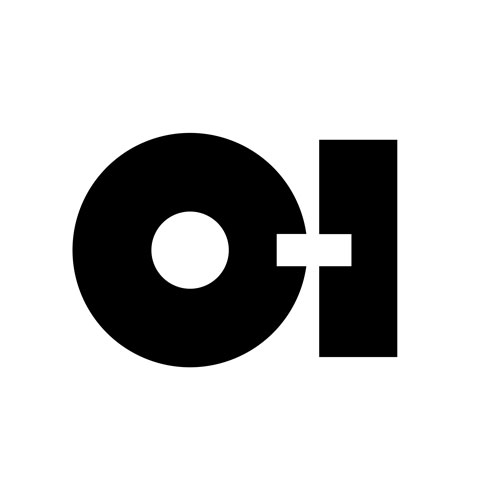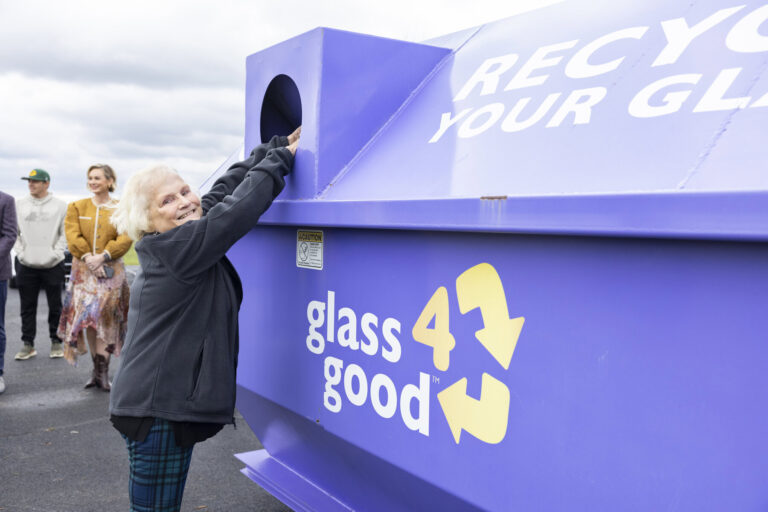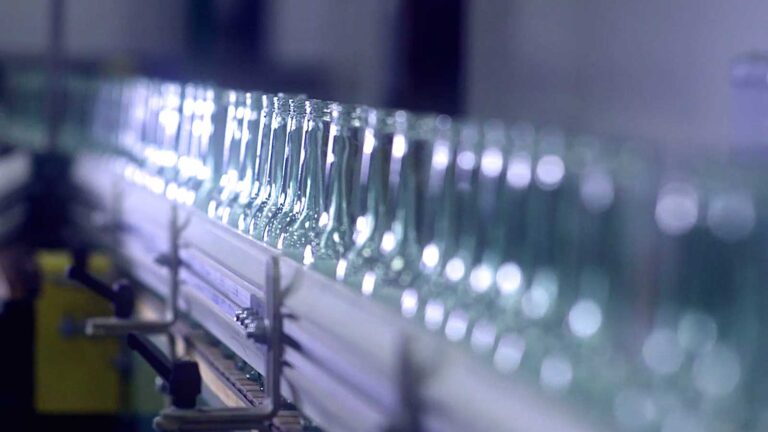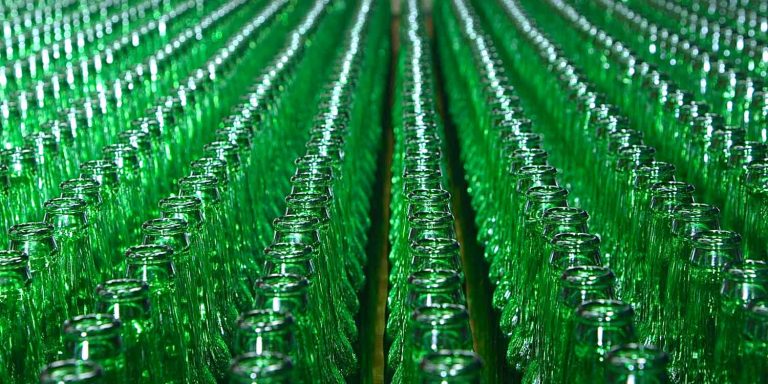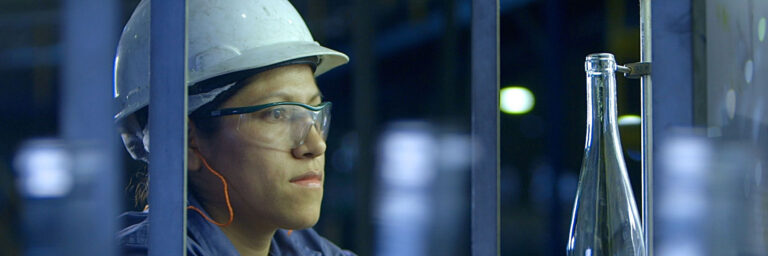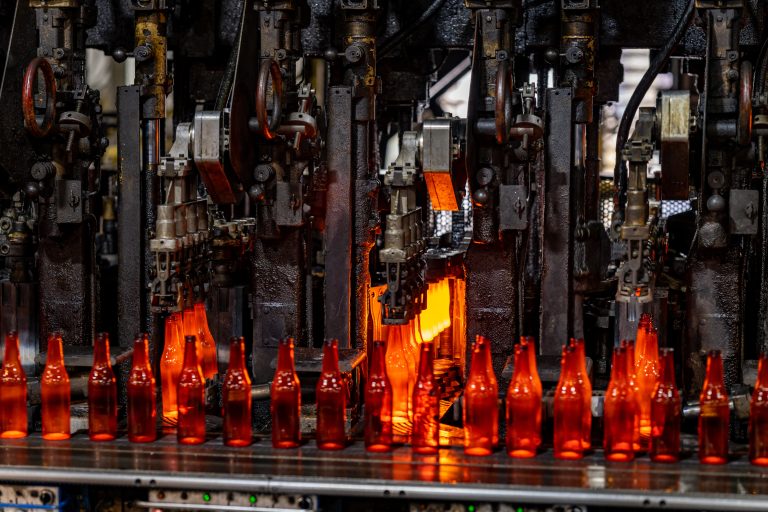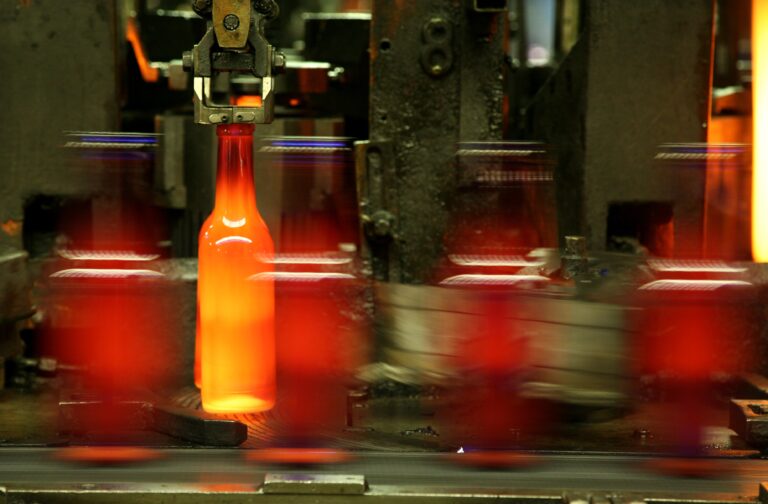FOR IMMEDIATE RELEASE
O-I REPORTS SECOND QUARTER 2017 RESULTS
Continued strong business performance and favorable non-operational
tailwinds drive 2017 earnings guidance higher
PERRYSBURG, Ohio (July 31, 2017) – Owens-Illinois, Inc. (NYSE: OI) today reported financial results for the second quarter ended June 30, 2017.
-
For the second quarter, earnings from continuing operations were $0.85 per share (diluted), compared with $0.65 per share in 2016, primarily driven by improved segment operating profit and lower interest and tax expense.
-
Excluding certain items management considers not representative of ongoing operations, adjusted earnings[1] were $0.75 per share, up 15 percent compared with prior year. This exceeded management’s second quarter guidance of $0.63 to $0.68 per share, largely due to a four cent per share benefit from a tax audit settled late in the quarter.
-
Net sales were $1.8 billion, on par with prior year second quarter. Price increased 1 percent on a global basis, which was offset by modestly lower sales volume and adverse currency translation. For the year-to-date period, net sales increased more than 50 basis points compared to 2016.
-
Earnings from continuing operations before income taxes were $152 million for the second quarter compared with $141 million for the same period in 2016, an increase of 8 percent.
-
Segment operating profit of reportable segments1 for the second quarter of 2017 was $252 million, an increase of 8 percent compared with prior year. More than half of the increase was generated in Latin America which benefited from sales gains and the early adoption of a total systems cost approach to managing structural costs. The 10 percent improvement in Europe was primarily driven by higher production volume and continued success in improving total systems costs.
-
The Company continues to successfully execute on its strategic initiatives in commercial activities, end-to-end supply chain management and working capital reduction. The focus on total systems cost improvement is on track to yield $35 million to $45 million in segment operating profit for the full year. Successful program execution will allow the closure of the plant in the Netherlands earlier than anticipated.
-
Interest expense was down 7 percent due to on-going efforts to deleverage, as well as refinancings undertaken over the past year.
-
The Company is raising its annual earnings guidance to reflect continued solid operating performance, favorable currency translation and a lower tax rate. The Company is confirming its cash flow guidance.
“O-I has delivered a strong first half, reflecting strong business performance from higher shipments and the benefits of our total systems cost approach. We continue to focus on our transformation efforts and reach performance levels that position us for another year of improved financial results,” said Andres Lopez, CEO. “Our teams are driving sales volume in line with our expectations, continued operating stability, and lower total systems cost. The results of this can be seen in our significant margin improvement. We have set the foundation for change and expect additional investments and capability-building in innovation, integration and organizational simplification to accelerate our turnaround.
“With half of the year behind us, expected strong business performance through the second half and favorable non-operational tailwinds, we are raising our guidance on our full-year earnings performance.”
Second Quarter 2017 Results
Net sales in the second quarter of 2017 were $1.8 billion, similar to the prior year second quarter. On a global basis, the 1 percent increase in price was offset by modestly lower sales volume and adverse currency translation.
For the first half of 2017, the net sales increase of more than 50 basis points reflects a stronger first quarter and softer second quarter which was partly due to higher shipping days in the first quarter.
In the second quarter, in Latin America, sales volumes increased low single digits mainly due to higher spirits and beer shipments. Growth was concentrated in Mexico, which reported record sales. Another positive sign was reported in Brazil where low single-digit growth in shipments in the quarter was driven by gains in June. In Europe, shipments were nearly on par with prior year, as expected. Sales volume in Asia Pacific declined primarily due to lower domestic sales in China, as production was exported to support sales to mature markets.
North America sales volume declined due to lower shipments and the ongoing unfavorable mix seen in prior quarters. Shipments declined primarily due to a fewer number of shipping days in the quarter and lower sales of returnable bottles in Canada.
The Company is mitigating the impact of the ongoing decline in megabeer in the U.S. by positioning itself to benefit from the growing market of U.S. beer imports through its joint venture with Constellation Brands and long-term sales contracts in Mexico. In the first half of 2017, shipments in beer for North America, plus Mexico and the JV with CBI are up mid-single digits.
The Company continues to make solid progress on executing its strategic initiatives. Commercial efforts continue to ramp up, supporting market-plus volume growth through the first half of the year. The Company’s focus on end-to-end supply chain cost reductions contributed approximately $18 million in cost savings in the first half of 2017. And, lower levels of inventory at the end of the second quarter, in terms of days sales, suggest good progress towards the Company’s full year target.
Segment operating profit was $252 million in the second quarter, 8 percent higher than prior year second quarter.
-
Europe reported segment operating profit of $80 million, which was $7 million, or 10 percent higher than the prior year quarter. As expected, the change in price essentially matched the change in cost inflation during the quarter, a significant improvement from the price-cost headwind reported in the first quarter of 2017. In the second quarter, the benefits from a total systems cost approach led to lower manufacturing spending and higher production, which together generated the very strong results for the quarter.
-
Segment operating profit for North America was $92 million in the quarter, on par with the second quarter of 2016. The North American business has been quite resilient in light of ongoing pressure from domestic beer market demand. The region has benefited from its well positioned exposure to beer imports from Mexico, progress on improving logistics costs and minor sales of non-strategic assets. The region continues to invest in flexibility and reliability of manufacturing assets so as to improve its alignment with market needs and deliver long-term profitability.
- Latin America reported segment operating profit of $69 million, exceeding the prior year quarter by $12 million or 21 percent. The region benefitted from the aforementioned increase in sales volumes. Cost inflation continued to impact performance in the second quarter, even as price increases are being adopted. Separately, the region has performed well due to its early adoption of a total systems cost approach to structural cost reductions.
-
Segment operating profit in Asia Pacific was $11 million, in line with the second quarter of the prior year. Sales volume declined due to fewer shipping days and also to lower domestic sales in China as production there was exported to support sales in Australia and New Zealand. This was essentially offset by the combined benefits of higher production volume and cost containment.
Retained corporate and other costs were $28 million in the second quarter, modestly higher than prior year due to lower equity earnings.
Net interest expense in the quarter was $62 million, down $5 million from the second quarter of 2016, primarily due to deleveraging and refinancing actions taken in the last 12 months.
The provision for income taxes was $9 million, a decrease of $21 million from the prior year. The Company settled a non-U.S. tax audit late in the second quarter of 2017, in which the Company paid $6 million in cash during the quarter, and reduced an accrual for potential tax exposure by approximately $20 million. Management considers this benefit not representative of ongoing operations, similar to its treatment when the accrual was established in years past. In light of the settlement, the Company also reversed $7 million of certain deferred tax liabilities, which benefited adjusted EPS by about 4 cents.
Adjusted net earnings[2] were $0.75 per share in the second quarter, up 15 percent compared with prior year. This continues the trend of rising year-on-year adjusted earnings reported by the Company.
Outlook
Today, a European subsidiary of the Company sold to a third party its right, title and interest in amounts due under its arbitration award against Venezuela. As consideration, the subsidiary received a cash payment of $115 million, and retains a modest potential upside depending upon recovery of the award. In the event the award is partially or completely annulled, the subsidiary may be required to repay up to the entire amount of the cash payment to the third party. Consistent with the current emphasis on deleveraging, the Company intends to use the after-tax proceeds of the cash payments to reduce outstanding borrowings under its revolving line of credit.
The Company is increasing its annual guidance for earnings and confirming its annual guidance for cash flow.
The Company now expects earnings from continuing operations attributable to the company (diluted) for the full year 2017 to be in the range of $2.37 to $2.47 per share. Excluding certain items from the first half of 2017 that management considers not representative of ongoing operations, this equates to adjusted earnings per share[3] for full year 2017 in the range of $2.55 to $2.65. The Company expects cash provided by continuing operating activities for 2017 to be approximately $750 million and adjusted free cash flow[4] to be approximately $365 million. The earnings and cash flow guidance ranges reflect uncertainty in macroeconomic conditions and currency rates, among other external factors.
Conference Call Scheduled for Aug. 1, 2017
O-I CEO Andres Lopez and CFO Jan Bertsch will conduct a conference call to discuss the Company’s latest results on Tuesday, Aug. 1, 2017, at 8:00 a.m. EDT. A live webcast of the conference call, including presentation materials, will be available on the O-I website,
www.o-i.com/investors, in the Webcasts and Presentations section.
The conference call also may be accessed by dialing 888-733-1701 (U.S. and Canada) or 706-634-4943 (international) by 7:50 a.m. EDT, on Aug. 1. Ask for the O-I conference call. A replay of the call will be available on the O-I website, www.o-i.com/investors, for a year following the call.
Contact: Sasha Sekpeh, 567-336-5128 – O-I Investor Relations
Kristin Kelley, 567-336-2395 – O-I Corporate Communications
O-I news releases are available on the O-I website at www.o-i.com.
O-I’s third quarter 2017 earnings conference call is currently scheduled for Tuesday, October 24, 2017, at 8:00 a.m. EDT.
About O-I
Owens-Illinois, Inc. (NYSE: OI) is the world’s largest glass container manufacturer and preferred partner for many of the world’s leading food and beverage brands. The Company had revenues of $6.7 billion in 2016 and employs more than 27,000 people at 79 plants in 23 countries. With global headquarters in Perrysburg, Ohio, O-I delivers safe, sustainable, pure, iconic, brand-building glass packaging to a growing global marketplace. For more information, visit o-i.com.
Non-GAAP Financial Measures
The Company uses certain non-GAAP financial measures, which are measures of its historical or future financial performance that are not calculated and presented in accordance with GAAP, within the meaning of applicable SEC rules. Management believes that its presentation and use of certain non-GAAP financial measures, including adjusted earnings, adjusted earnings per share, segment operating profit, segment operating profit margin and adjusted free cash flow, provide relevant and useful supplemental financial information, which is widely used by analysts and investors, as well as by management in assessing both consolidated and business unit performance. These non-GAAP measures are reconciled to the most directly comparable GAAP measures and should be considered supplemental in nature and should not be considered in isolation or be construed as being more important than comparable GAAP measures.
Adjusted earnings relates to net earnings from continuing operations attributable to the Company, exclusive of items management considers not representative of ongoing operations because such items are not reflective of the Company’s principal business activity, which is glass container production. Adjusted earnings are divided by weighted average shares outstanding (diluted) to derive adjusted earnings per share. Segment operating profit relates to earnings from continuing operations before interest expense (net), provision for income taxes and is also exclusive of items management considers not representative of ongoing operations. Segment operating profit margin is segment operating profit divided by segment net sales. Management uses adjusted earnings, adjusted earnings per share, segment operating profit and segment operating profit margin to evaluate its period-over-period operating performance because it believes this provides a useful supplemental measure of the results of operations of its principal business activity by excluding items that are not reflective of such operations. Adjusted earnings, adjusted earnings per share, segment operating profit and segment operating profit margin may be useful to investors in evaluating the underlying operating performance of the Company’s business as these measures eliminate items that are not reflective of its principal business activity.
Further, adjusted free cash flow relates to cash provided by continuing operating activities less additions to property, plant and equipment plus asbestos-related payments. Management uses adjusted free cash flow to evaluate its period-over-period cash generation performance because it believes this provides a useful supplemental measure related to its principal business activity. Adjusted free cash flow may be useful to investors to assist in understanding the comparability of cash flows generated by the Company’s principal business activity. Since a significant majority of the Company’s asbestos-related claims are expected to be received in the next ten years, adjusted free cash flow may help investors to evaluate the long-term cash generation ability of the Company’s principal business activity as these asbestos-related payments decline. It should not be inferred that the entire adjusted free cash flow amount is available for discretionary expenditures, since the Company has mandatory debt service requirements and other non-discretionary expenditures that are not deducted from the measure. Management uses non-GAAP information principally for internal reporting, forecasting, budgeting and calculating compensation payments.
The Company routinely posts important information on its website – www.o-i.com/investors.
Forward-Looking Statements
This document contains “forward-looking” statements within the meaning of Section 21E of the Securities Exchange Act of 1934, as amended (the “Exchange Act”) and Section 27A of the Securities Act of 1933. Forward-looking statements reflect the Company’s current expectations and projections about future events at the time, and thus involve uncertainty and risk. The words “believe,” “expect,” “anticipate,” “will,” “could,” “would,” “should,” “may,” “plan,” “estimate,” “intend,” “predict,” “potential,” “continue,” and the negatives of these words and other similar expressions generally identify forward-looking statements. It is possible the Company’s future financial performance may differ from expectations due to a variety of factors including, but not limited to the following: (1) the Company’s ability to realize expected growth opportunities, cost savings and synergies from the Vitro Acquisition, (2) foreign currency fluctuations relative to the U.S. dollar, (3) changes in capital availability or cost, including interest rate fluctuations and the ability of the Company to refinance debt at favorable terms, (4) the general political, economic and competitive conditions in markets and countries where the Company has operations, including uncertainties related to economic and social conditions, disruptions in capital markets, disruptions in the supply chain, competitive pricing pressures, inflation or deflation, and changes in tax rates and laws, (5) the Company’s ability to generate sufficient future cash flows to ensure the Company’s goodwill is not impaired, (6) consumer preferences for alternative forms of packaging, (7) cost and availability of raw materials, labor, energy and transportation, (8) the Company’s ability to manage its cost structure, including its success in implementing restructuring plans and achieving cost savings, (9) consolidation among competitors and customers, (10) the Company’s ability to acquire businesses and expand plants, integrate operations of acquired businesses and achieve expected synergies, (11) unanticipated expenditures with respect to environmental, safety and health laws, (12) the Company’s ability to further develop its sales, marketing and product development capabilities, (13) the Company’s ability to prevent and detect cybersecurity threats against its information technology systems, (14) the Company’s ability to accurately estimate its total asbestos-related liability or to control the timing and occurrence of events relates to asbestos-related claims, (15) changes in U.S. trade policies, (16) the Company’s ability to achieve its strategic plan, and the other risk factors associated with the business described in the Company’s annual report on Form 10-K, quarterly reports on Form 10-Q and current reports on Form 8-K filed with the SEC. It is not possible to foresee or identify all such factors. Any forward-looking statements in this document are based on certain assumptions and analyses made by the Company in light of its experience and perception of historical trends, current conditions, expected future developments, and other factors it believes are appropriate in the circumstances. Forward-looking statements are not a guarantee of future performance and actual results or developments may differ materially from expectations. While the Company continually reviews trends and uncertainties affecting the Company’s results of operations and financial condition, the Company does not assume any obligation to update or supplement any particular forward-looking statements contained in this document.
[1] Adjusted earnings per share and segment operating profit of reportable segments (“segment operating profit”) are non-GAAP financial measures. See tables included in this release for reconciliations to the most directly comparable GAAP measures.
[2] See table entitled Reconciliation to Adjusted Earnings and Constant Currency.
[3] See table entitled Reconciliation to Expected Adjusted Earnings – FY17 Forecast.
[4] Adjusted free cash flow is a non-GAAP financial measure defined as cash provided by continuing operating activities less additions to property, plant and equipment plus asbestos-related payments (all components as determined in accordance with GAAP). See table entitled Reconciliation to Adjusted Free Cash Flow.
